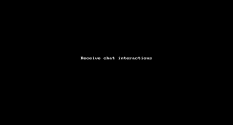Customer-to-agent chat
As an 8x8 Contact Center agent, you can chat with up to six customers. You must be part of a queue to receive chats coming to that queue. When a customer chat arrives in the queue, it is offered to the available agent who has been waiting for the longest time.
Features
- Agents can chat with up to six customers.
- Agents can accept or reject incoming chats.
- Chat is offered to the available agent who has been waiting in the queue for the longest time.
- Agents can access the customer's email, name, and IP address from the pop-out chat window.
Note: The reject ![]() interaction button is disabled if your contact center administrator has not granted permission. This prevents agents from rejecting the interactions they are offered.
interaction button is disabled if your contact center administrator has not granted permission. This prevents agents from rejecting the interactions they are offered.
Before you start
First, you need to check if you are part of a chat queue to receive their chats:
- Log in to 8x8 Agent Workspace
 The brand new interface for 8x8 Contact Center agents to receive and process customer interactions..
The brand new interface for 8x8 Contact Center agents to receive and process customer interactions.. -
Click Ready to work to start the session.
-
Click My assigned queues in the Control Panel. Enable the desired queue, and click Confirm selections.
-OR-
Go to Change status > My Profile > Queues. Enable the desired media queue, such as chat or inbound phone queue, and click Save queues.
> My Profile > Queues. Enable the desired media queue, such as chat or inbound phone queue, and click Save queues.
Note: You are able to change the settings in My profile or in your assigned queues if permitted by your tenant administrator.
Process customer chats
To process a customer chat:
-
Click the status
 menu option and change your status to Available.
menu option and change your status to Available.The chat notification in the Control Panel indicates an incoming chat request.
- Preview the record details and click
 to accept chat.
to accept chat.Note: The reject interaction button
 is disabled if your contact center administrator has not granted the permission. This prevents agents from rejecting the interactions they are offered.
is disabled if your contact center administrator has not granted the permission. This prevents agents from rejecting the interactions they are offered.Note: If you reject the chat, or fail to accept it before the acceptance interval lapses, your status is changed to On Break.
- If the incoming chat is from an existing customer, the customer or case record pops for preview. If the customer supplied account or case information when initiating the chat, 8x8 Agent
 Agents use the Agent Console to view and manage customer interactions. Virtual Contact Center supports Regular agents and Supervisor agents. Workspace accesses the appropriate record and presents the record for preview. The screen pop behavior may vary based on the settings.
Agents use the Agent Console to view and manage customer interactions. Virtual Contact Center supports Regular agents and Supervisor agents. Workspace accesses the appropriate record and presents the record for preview. The screen pop behavior may vary based on the settings. Note: If the screen pop fails to open, clean up your browser cache and cookies and log back in.
- If the request is from a new customer, a new customer record entry form pops up. Enter the details of the new customer, and save the customer record.
- Answer the customer in the chat window and click
 to send your message. Your chat entry is posted on the customer's chat window. You are also notified of typing in progress on either end. You can also insert information from FAQs. For details, refer to Insert FAQ responses into chat interactions.
to send your message. Your chat entry is posted on the customer's chat window. You are also notified of typing in progress on either end. You can also insert information from FAQs. For details, refer to Insert FAQ responses into chat interactions.Note: The chat window capacity is 1940 characters to allow agents to communicate large bodies of text, such as FAQs, via the chat window.
- After finishing the chat, click
 . The timer indicates the time for wrap-up.
. The timer indicates the time for wrap-up. - You may be required to select an outcome for Disposition. Select one for this interaction from the list and click Continue.
- Click Wrap up.
- At the termination of the chat, a chat log may pop up. The chat log opens in view mode or edit mode based on the settings. Auto log occurs only if the administrator has configured it.
Notes:
- A chat log opens in view mode if the chat request is from an existing customer. The log case is associated with that customer record automatically.
- A chat log opens in edit mode if the chat request is from a new customer. While saving the log, you are prompted to select a customer from the existing list. - Edit the chat log case as desired, and save it or save it as a draft. Select the newly-created customer from the list.
The log is saved as a case.
